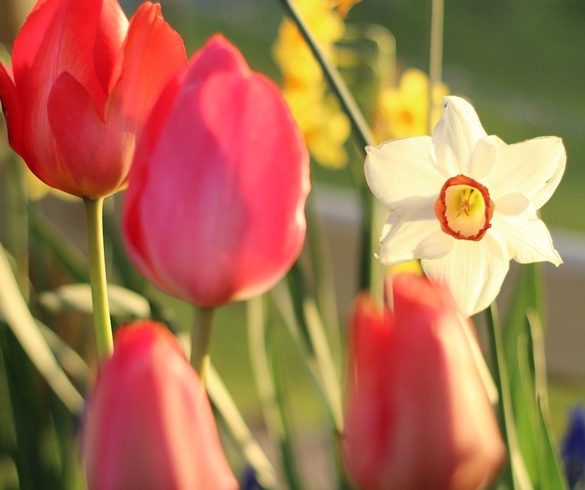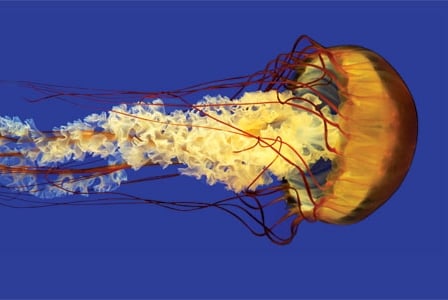
Daffodil and Tulip Bulbs Are Hungry Now
– The signal is little green leaf tips that have struggled to sprout and grow up from spring-flowering bulbs, through topsoil or surface mulch, and out into the light.
Those tiny new spikes of daffodil, tulip and hyacinth foliage are a sign that spring is on the way.
But, the fact that they´ve emerged is a signal – a dinner bell, sounded by the underground bulbs, according to Ward Upham, horticulturist with Kansas State University Research and Extension.
\”This timing is totally counter to what´s best for feeding other flowering plants. That´s why gardeners often make the mistake of fertilizing bulbs later, as or soon after they bloom,\” Upham said.
Feeding bulbs then is a waste of fertilizer, he explained. When their foliage first pokes into sight, the bulbs´ roots have awakened from winter and are hard at work. By the time the plants start blooming, those same roots will be dying. The bulbs won´t put out new roots until fall.
\”If fertilized while they´re flowering, the bulbs will get a partial to zero dose of the nutrients they need to produce flowers the following year. So, if you miss early spring, you´ll be better off waiting until fall,\” Upham said, \”which also a good time to fertilize.\”
Bulbs need nitrogen every year, he said. And, that´s what they´ll get from a traditional application of blood meal at a rate of 2 pounds per 100 square feet (1 teaspoon per square foot).
\”You can´t go too far wrong, though, with a nitrogen-rich lawn fertilizer. Those formulations have a large first number on the bag, such as 27-3-3 or 30-3-3,\” the horticulturist said. \”Don´t apply it at the rate recommended for lawns, though. Cut that rate by a third to about 1 pound per 100 square feet.\”
Many central U.S. soils already have a good supply of phosphorus and potassium – represented by the second and third numbers on fertilizer bags, Upham warned. So, unless a soil test indicates an existing planting needs more of those nutrients, applying a complete fertilizer can be bad idea.
For complete fertilizers, the bags\’ three numbers tend to be the same or close to each other in amount, as in 10-10-10 or 9-9-6.
\”After the bulbs bloom, the only other thing you´ll have to remember is to leave the plants´ foliage attached until it dies naturally. As the foliage turns brown, the plants will transfer the leaves´ energy down to their bulb. That energy will also help with next year\’s blooms,\” Upham said.
Source
K-State Research and Extension






